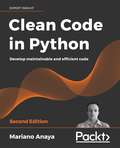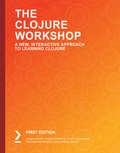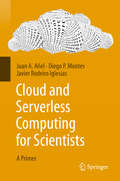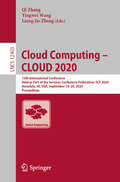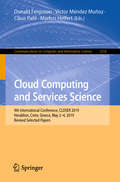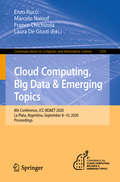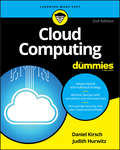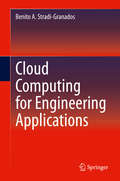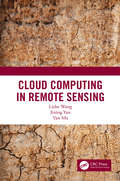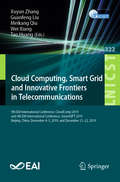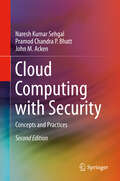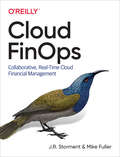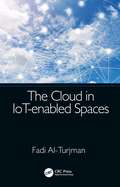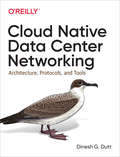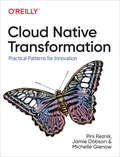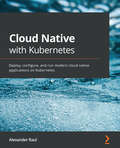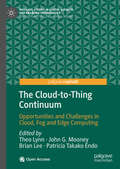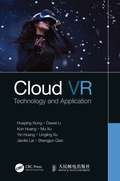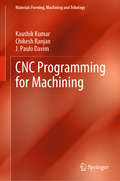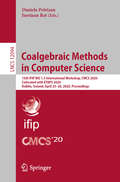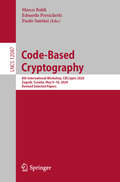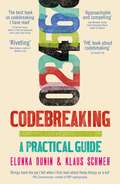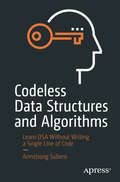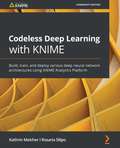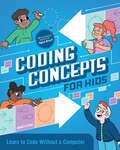- Table View
- List View
Clean Code in Python: Develop maintainable and efficient code, 2nd Edition
by Mariano AnayaImprove your software engineering practices to tackle inefficiencies, errors, and other perils that emerge due to bad codeKey FeaturesEnhance your coding skills to increase efficiency as well as reflect the new features introduced in Python 3.9Understand how to apply microservices to your legacy systems by implementing practical techniquesLearn to implement the refactoring techniques and SOLID principles in PythonBook DescriptionThe Python language is immensely prevalent in numerous areas, such as software construction, systems administration, and data processing. Experienced professionals in every field face the challenges of disorganization, poor readability, and low testability as a result of unstructured code. With updated code and revised content aligned to the new features of Python 3.9, this second edition of Clean Code in Python will provide you with all the tools you need to overcome these obstacles and manage your projects successfully. The book begins by describing the basic elements of writing clean code and how it plays a key role in Python programming. You will learn about writing efficient and readable code using the Python standard library and best practices for software design. The book delves deeply into object-oriented programming in Python and shows you how to use objects with descriptors and generators. It will also show you the design principles of software testing and how to resolve problems by implementing software design patterns in your code. In the final chapter, we break down a monolithic application into a microservices based one starting from the code as the basis for a solid platform. By the end of this clean code book, you will be proficient in applying industry-approved coding practices to design clean, sustainable, and readable real-world Python code.What you will learnSet up a productive development environment by leveraging automatic toolsLeverage the magic methods in Python to write better code, abstracting complexity away and encapsulating detailsCreate advanced object-oriented designs using unique features of Python, such as descriptorsEliminate duplicated code by creating powerful abstractions using software engineering principles of object-oriented designCreate Python-specific solutions using decorators and descriptorsRefactor code effectively with the help of unit testsBuild the foundations for solid architecture with a clean code base as its cornerstoneWho this book is forThis book will appeal to team leads, software architects, and senior software engineers who want to learn Python coding techniques and work on their legacy systems to save cost and improve efficiency. The book assumes that you have a strong understanding of programming.
The Clojure Workshop: A New, Interactive Approach to Learning Clojure
by Konrad Szydlo Joseph Fahey Thomas Haratyk Scott McCaughie Yehonathan SharvitCut through the noise and get real results with a step-by-step approach to learning Clojure programming Key Features Ideal for the Clojure beginner who is getting started for the first time A step-by-step Clojure tutorial with exercises and activities that help build key skills Structured to let you progress at your own pace, on your own terms Use your physical print copy to redeem free access to the online interactive edition Book Description You already know you want to learn Clojure, and a smarter way to learn Clojure is to learn by doing. The Clojure Workshop focuses on building up your practical skills so that you can write clean, expressive code with a language that is great for applications where concurrency and interoperability with the JVM are a priority. You'll learn from real examples that lead to real results. Throughout The Clojure Workshop, you'll take an engaging step-by-step approach to understanding Clojure. You won't have to sit through any unnecessary theory. If you're short on time you can jump into a single exercise each day or spend an entire weekend learning about Clojure web development with Ring. It's your choice. Learning on your terms, you'll build up and reinforce key skills in a way that feels rewarding. Every physical print copy of The Clojure Workshop unlocks access to the interactive edition. With videos detailing all exercises and activities, you'll always have a guided solution. You can also benchmark yourself against assessments, track progress, and receive content updates. You'll even earn a secure credential that you can share and verify online upon completion. It's a premium learning experience that's included with your printed copy. To redeem, follow the instructions located at the start of your Clojure book. Fast-paced and direct, The Clojure Workshop is the ideal for Clojure beginners. You'll build and iterate on your code like a software developer , learning along the way. This process means that you'll find that your new skills stick, embedded as best practice. A solid foundation for the years ahead. What you will learn Learn about Clojure fundamentals like functional programming Understand and implement common Clojure patterns and best practices Explore Clojure's testing infrastructure and the clojure.test library Build a client-server application with Clojure and ClojureScript Learn how to debug and resolve errors and exceptions Explore Ring – Clojure's interface and library for building web applications Who this book is for Our goal at Packt is to help you be successful, in whatever it is you choose to do. The Clojure Workshop is an ideal Clojure tutorial for the Clojure beginner who is just getting started. Pick up a Workshop today, and let Packt help you develop skills that stick with you for life.
Cloud and Serverless Computing for Scientists: A Primer
by Juan A. Añel Diego P. Montes Javier Rodeiro IglesiasThis book offers an introduction to cloud computing and serverless computing for students, researchers and R&D organizations through several practical examples. Rather than focusing exclusively on the computational issues related to cloud computing, the authors focus on addressing the multidisciplinary applications of cloud computing for daily research work in public institutions and private companies in fields such as archaeology, geosciences, computer sciences, medicine and physics. The book also discusses the emergence of serverless computing over the last three years as a means to make computational infrastructures more apparent to users, avoiding the need to concern one's self with the type of server or computing machine needed to perform a computing task. These topics are presented from the perspective of users, researchers and decision-makers, and are approached based on the authors' collective experience on the use and adoption of cloud computing.
Cloud Computing – CLOUD 2020: 13th International Conference, Held as Part of the Services Conference Federation, SCF 2020, Honolulu, HI, USA, September 18-20, 2020, Proceedings (Lecture Notes in Computer Science #12403)
by Qi Zhang Yingwei Wang Liang-Jie ZhangThis book constitutes the proceedings of the 13th International Conference on Cloud Computing, CLOUD 2020, held as part of SCF 2020, during September 18-20, 2020. The conference was planned to take place in Honolulu, HI, USA and was changed to a virtual format due to the COVID-19 pandemic.The 16 full and 6 short papers presented were carefully reviewed and selected from 49 submissions. They deal with the latest fundamental advances in the state of the art and practice of cloud computing, identify emerging research topics, and define the future of cloud computing.
Cloud Computing and Services Science: 9th International Conference, CLOSER 2019, Heraklion, Crete, Greece, May 2–4, 2019, Revised Selected Papers (Communications in Computer and Information Science #1218)
by Donald Ferguson Víctor Méndez Muñoz Claus Pahl Markus HelfertThis book constitutes extended, revised and selected papers from the 9th International Conference on Cloud Computing and Services Science, CLOSER 2019, held in Heraklion, Greece, in May 2019.The 11 papers presented in this volume were carefully reviewed and selected from a total of 102 submissions. CLOSER 2019 focuses on the emerging area of Cloud Computing, inspired by some latest advances that concern the infrastructure, operations, and available servicesthrough the global network.
Cloud Computing, Big Data & Emerging Topics: 8th Conference, JCC-BD&ET 2020, La Plata, Argentina, September 8-10, 2020, Proceedings (Communications in Computer and Information Science #1291)
by Enzo Rucci Marcelo Naiouf Franco Chichizola Laura De GiustiThis book constitutes the revised selected papers of the 8th International Conference on Cloud Computing, Big Data & Emerging Topics, JCC-BD&ET 2020, held in La Plata, Argentina*, in September 2020.The 11 full papers presented were carefully reviewed and selected from a total of 36 submissions. The papers are organized in topical sections of cloud computing and HPC; Big Data and machine and deep learning.*The conference was held virtually due to the COVID-19 pandemic.
Cloud Computing For Dummies
by Judith S. Hurwitz Daniel KirschChoose the best cloud solutions for your needs Cloud computing is a topic that technology pros need to know to stay ahead of the computing game. Cloud Computing For Dummies comes to the rescue of those still trying to sort out the many options in the world of cloud. Judith Hurwitz and her team of analysts share the cloud insights they earned by consulting with some of the world's largest companies. Peek inside to sort out topics like multi-cloud architecture, hybrid-cloud infrastructure, development in the cloud, and software as a service. Understand how the cloud can improve your business Explore cloud models including hybrid and multi-cloud environments See how infrastructure and software can be delivered as a service Discover best practices This edition is written for IT professionals, decision makers, and others who need general knowledge about cloud computing, how it works, and what options they have.
Cloud Computing for Engineering Applications
by Benito A. Stradi-GranadosThis book explains the use of cloud computing systems for engineering applications to satisfy the need for enterprise level, state-of-the-art computational capacities at an affordable cost. As huge costs are involved in the maintenance and timely renovation of computational capabilities, particularly for projects that require significant computational capacity, cloud services can achieve considerable savings for users and organizations engaged in engineering research and development. Dr. Stradi-Granados explains how to extract a maximum value from every dollar invested in cloud computer server. The types of facilities located around the world that lease their resources to customers interested in reducing the internal overhead and implementation time. The volume features chapters on model generation, motion studies, and prototyping is ideal for students, researchers, practitioners, and facility's managers across a range of engineering domains.
Cloud Computing in Remote Sensing
by Lizhe Wang Jining Yan Yan MaThis book provides the users with quick and easy data acquisition, processing, storage and product generation services. It describes the entire life cycle of remote sensing data and builds an entire high performance remote sensing data processing system framework. It also develops a series of remote sensing data management and processing standards. Features: Covers remote sensing cloud computing Covers remote sensing data integration across distributed data centers Covers cloud storage based remote sensing data share service Covers high performance remote sensing data processing Covers distributed remote sensing products analysis
Cloud Computing, Smart Grid and Innovative Frontiers in Telecommunications: 9th EAI International Conference, CloudComp 2019, and 4th EAI International Conference, SmartGIFT 2019, Beijing, China, December 4-5, 2019, and December 21-22, 2019 (Lecture Notes of the Institute for Computer Sciences, Social Informatics and Telecommunications Engineering #322)
by Xuyun Zhang Guanfeng Liu Meikang Qiu Wei Xiang Tao HuangThis book constitutes the refereed proceedings of the 9thInternational Conference on Cloud Computing, CloudComp 2019, and the 4th International Conference on Smart Grid and Innovative Frontiers in Telecommunications, SmartGIFT 2019, both held in Beijing, China, in December 2019. The55 full papers of both conferences were selected from 113 submissions. CloudComp 2019 presents recent advances and experiences in clouds, cloud computing and related ecosystems and business support. The papers are grouped thematically in tracks on cloud architecture and scheduling; cloud-based data analytics; cloud applications; and cloud security and privacy. SmartGIFT 2019 focus on all aspects of smart grids and telecommunications, broadly understood as the renewable generation and distributed energy resources integration, computational intelligence applications, information and communication technologies.
Cloud Computing with Security: Concepts and Practices
by Naresh Kumar Sehgal John M. Acken Pramod Chandra BhattThis book provides readers with an overview of Cloud Computing, starting with historical background on mainframe computers and early networking protocols, leading to current concerns such as hardware and systems security, performance, emerging areas of IoT, Edge Computing etc. Readers will benefit from the in-depth discussion of cloud computing usage and the underlying architectures. The authors explain carefully the “why’s and how’s” of Cloud Computing, so engineers will find this book an invaluable source of information to the topic. This second edition includes new material on Cloud Computing Security, Threat Vectors and Trust Models, as well as best practices for a using dynamic cloud infrastructure, and cloud operations management. Several new examples and analysis of cloud security have been added, including edge computing with IoT devices.
Cloud FinOps: Collaborative, Real-Time Cloud Financial Management
by J. R. Storment Mike FullerDespite many uncertainties in cloud computing, one truth is evident: costs will always tend to go up unless you’re actively engaged in the process. Whether you’re new to managing cloud spend or a seasoned pro, this book will clarify the often misunderstood workings of cloud billing fundamentals and provide expert strategies on creating a culture of cloud cost management in your organization.Drawing on real-world examples of successes and failures of large-scale cloud spenders, this book outlines a road map for building a culture of FinOps in your organization. Beginning with the fundamental concepts required to understand cloud billing concepts, you’ll learn how to enable an efficient and effective FinOps machine.Learn how the cloud works when it comes to financial managementSet up a FinOps team and build a framework for making spend efficiency a priorityExamine the anatomy of a cloud bill and learn how to manage itGet operational recipes for maximizing cloud efficiencyUnderstand how to motivate engineering teams to take cost-saving actionsExplore the FinOps lifecycle: Inform, Optimize, and OperateLearn the DNA of a highly functional cloud FinOps culture
The Cloud in IoT-enabled Spaces
by Fadi Al-TurjmanThe Cloud in IoT-enabled Spaces addresses major issues and challenges in IoT-based solutions proposed for the Cloud. It paves the way for IoT-enabled spaces in the next generation cloud computing paradigm and opens the door for further innovative ideas. Topics include Cloud-based optimization in the IoT era, scheduling and routing, medium access, data caching, secure access, uncertainty, home automation, machine learning in wearable devices, energy monitoring, and plant phenotyping in farming. Smart spaces are solutions where Internet of Things (IoT)-enabling technologies have been employed towards further advances in the lifestyle. It tightly integrates with the existing Cloud infrastructure to impact several fields in academia and industry. The Cloud in IoT-enabled Spaces provides an overview of the issues around small spaces and proposes the most up-to-date alternatives and solutions. The objective is to pave the way for IoT-enabled spaces in the next-generation Cloud computing and open the door for further innovative ideas.
Cloud Native Data Center Networking: Architecture, Protocols, and Tools
by Dinesh G. DuttIf you want to study, build, or simply validate your thinking about modern cloud native data center, networks, this is your book. Whether you’re pursuing a multitenant private cloud, a network for running machine learning, or an enterprise data center, author Dinesh Dutt takes you through the steps necessary to design a data center that’s affordable, high capacity, easy to manage, agile, and reliable.Ideal for network architects, data center operators, and network and containerized application developers, this book mixes theory with practice to guide you through the architecture and protocols you need to create and operate a robust, scalable network infrastructure. The book offers a vendor-neutral way to look at network design. For those interested in open networking, this book is chock-full of examples using open source software, from FRR to Ansible.In the context of a cloud native data center, you’ll examine:Clos topologyNetwork disaggregationNetwork operating system choicesRouting protocol choicesContainer networkingNetwork virtualization and EVPNNetwork automation
Cloud Native Transformation: Practical Patterns for Innovation
by Pini Reznik Jamie Dobson Michelle GienowIn the past few years, going cloud native has been a big advantage for many companies. But it’s a tough technique to get right, especially for enterprises with critical legacy systems. This practical hands-on guide examines effective architecture, design, and cultural patterns to help you transform your organization into a cloud native enterprise—whether you’re moving from older architectures or creating new systems from scratch.By following Wealth Grid, a fictional company, you’ll understand the challenges, dilemmas, and considerations that accompany a move to the cloud. Technical managers and architects will learn best practices for taking on a successful company-wide transformation.Cloud migration consultants Pini Reznik, Jamie Dobson, and Michelle Gienow draw patterns from the growing community of expert practitioners and enterprises that have successfully built cloud native systems. You’ll learn what works and what doesn’t when adopting cloud native—including how this transition affects not just your technology but also your organizational structure and processes.You’ll learn:What cloud native means and why enterprises are so interested in itCommon barriers and pitfalls that have affected other companies (and how to avoid them)Context-specific patterns for a successful cloud native transformationHow to implement a safe, evolutionary cloud native approachHow companies addressed root causes and misunderstandings that hindered their progressCase studies from real-world companies that have succeeded with cloud native transformations
Cloud Native with Kubernetes
by Alexander RaulThis book is for developers, architects, DevOps engineers, or anyone interested in developing and managing cloud-native applications. Those already running cloud applications and looking for a better way to manage their platform or others interested in a career change given the recent popularity of Kubernetes will also find this book helpful. Some familiarity with cloud computing, containers and DevOps is required, but no prior knowledge of building production applications using Kubernetes is needed to get started with this book.
The Cloud-to-Thing Continuum: Opportunities and Challenges in Cloud, Fog and Edge Computing (Palgrave Studies in Digital Business & Enabling Technologies)
by Theo Lynn John G. Mooney Brian Lee Patricia Takako EndoThe Internet of Things offers massive societal and economic opportunities while at the same time significant challenges, not least the delivery and management of the technical infrastructure underpinning it, the deluge of data generated from it, ensuring privacy and security, and capturing value from it.This Open Access Pivot explores these challenges, presenting the state of the art and future directions for research but also frameworks for making sense of this complex area. This book provides a variety of perspectives on how technology innovations such as fog, edge and dew computing, 5G networks, and distributed intelligence are making us rethink conventional cloud computing to support the Internet of Things. Much of this book focuses on technical aspects of the Internet of Things, however, clear methodologies for mapping the business value of the Internet of Things are still missing. We provide a value mapping framework for the Internet of Things to address this gap. While there is much hype about theInternet of Things, we have yet to reach the tipping point. As such, this book provides a timely entrée for higher education educators, researchers and students, industry and policy makers on the technologies that promise to reshape how society interacts and operates.
Cloud VR: Technology and Application
by Huaping Xiong Dawei Li Kun Huang Mu Xu Yin Huang Lingling Xu Jianfei Lai Shengjun QianBased on the technical accumulation and practice of Huawei iLab in the Cloud VR field, this book systematically describes the advantages of Cloud VR technologies; technical requirements on clouds, networks, and terminals as well as solution implementation; Cloud VR experience evaluation baselines and methods; and current business practices. Cloud VR introduces cloud computing and cloud rendering to VR services. With fast and stable networks, cloud-based display output and audio output are coded, compressed, and transmitted to user terminals, implementing cloud-based VR service content and content rendering. Cloud VR has stringent requirements on bandwidth and latency, making it a proficient application for 5G and gigabit home broadband networks in the era of "dual G". As the first advocate of Cloud VR, Huawei iLab developed the first prototype of the Cloud VR technical solution, initiated the industry’s first Cloud VR industry cooperation plan – VR OpenLab with partners – and incubated the world’s first Cloud VR commercial project with China Mobile Fujian. Cloud VR: Technology and Application is the first official publication of Huawei iLab’s research and practice achievements. It systematically and thoroughly introduces the Cloud VR concept, solution architecture, key technologies, and business practices and is of great value in academic and social applications. This book is easy to understand, practical, and suitable for VR vendors, VR technology enthusiasts, carriers, network vendors, cloud service providers, universities, and other enterprises and scientific research institutes.
CNC Programming for Machining (Materials Forming, Machining and Tribology)
by J. Paulo Davim Kaushik Kumar Chikesh RanjanThe book is basically written with a view to project Computer Numerical Control Programming (CNC) Programming for machines. This book shows how to write, read and understand such programs for modernizating manufacturing machines. It includes topics such as different programming codes as well as different CNC machines such as drilling and milling.
Coalgebraic Methods in Computer Science: 15th IFIP WG 1.3 International Workshop, CMCS 2020, Colocated with ETAPS 2020, Dublin, Ireland, April 25–26, 2020, Proceedings (Lecture Notes in Computer Science #12094)
by Daniela Petrişan Jurriaan RotThis book constitutes the thoroughly refereed post-conference proceedings of the 15th International Workshop on Coalgebraic Methods in Computer Science, CMCS 2020, colocated with ETAPS 2020, held in Dublin, Ireland, in April 2020. The conference was held as several online events in September and October due to the COVID-19 pandemic. The 9 revised full papers were carefully reviewed and selected from 13 submissions. Also included is one invited talk. The papers cover a wide range of topics in the theory, logics, and applications of coalgebras.
Code-Based Cryptography: 8th International Workshop, CBCrypto 2020, Zagreb, Croatia, May 9–10, 2020, Revised Selected Papers (Lecture Notes in Computer Science #12087)
by Marco Baldi Edoardo Persichetti Paolo SantiniThis book constitutes the refereed and revised post-conference proceedings of the 8th International Workshop on Code-Based Cryptography, CBCrypto 2020, held in Zagreb, Croatia, in May 2020.*The seven papers presented in this book were carefully reviewed and selected from numerous submissions. These contributions focus on various topics such as code-based cryptography, from design to implementation, security, new systems, and improved decoding algorithms. * The conference was held virtually due to the COVID-19 pandemic.
Codebreaking: A Practical Guide
by Elonka Dunin Klaus Schmeh'The best book on codebreaking I have read', SIR DERMOT TURING 'Brings back the joy I felt when I first read about these things as a kid', PHIL ZIMMERMANN 'This is at last the single book on codebreaking that you must have. If you are not yet addicted to cryptography, this book will get you addicted. Read, enjoy, and test yourself on history's great still-unbroken messages!' JARED DIAMOND is the Pulitzer Prize-winning author of Guns, Germs, and Steel; Collapse; and other international bestsellers'This is THE book about codebreaking. Very concise, very inclusive and easy to read', ED SCHEIDT'Riveting', MIKE GODWIN 'Approachable and compelling', GLEN MIRANKERThis practical guide to breaking codes and solving cryptograms by two world experts, Elonka Dunin and Klaus Schmeh, describes the most common encryption techniques along with methods to detect and break them. It fills a gap left by outdated or very basic-level books. This guide also covers many unsolved messages. The Zodiac Killer sent four encrypted messages to the police. One was solved; the other three were not. Beatrix Potter's diary and the Voynich Manuscript were both encrypted - to date, only one of the two has been deciphered. The breaking of the so-called Zimmerman Telegram during the First World War changed the course of history. Several encrypted wartime military messages remain unsolved to this day. Tens of thousands of other encrypted messages, ranging from simple notes created by children to encrypted postcards and diaries in people's attics, are known to exist. Breaking these cryptograms fascinates people all over the world, and often gives people insight into the lives of their ancestors. Geocachers, computer gamers and puzzle fans also require codebreaking skills.This is a book both for the growing number of enthusiasts obsessed with real-world mysteries, and also fans of more challenging puzzle books. Many people are obsessed with trying to solve famous crypto mysteries, including members of the Kryptos community (led by Elonka Dunin) trying to solve a decades-old cryptogram on a sculpture at the centre of CIA Headquarters; readers of the novels of Dan Brown as well as Elonka Dunin's The Mammoth Book of Secret Code Puzzles (UK)/The Mammoth Book of Secret Codes and Cryptograms (US); historians who regularly encounter encrypted documents; perplexed family members who discover an encrypted postcard or diary in an ancestor's effects; law-enforcement agents who are confronted by encrypted messages, which also happens more often than might be supposed; members of the American Cryptogram Association (ACA); geocachers (many caches involve a crypto puzzle); puzzle fans; and computer gamers (many games feature encryption puzzles). The book's focus is very much on breaking pencil-and-paper, or manual, encryption methods. Its focus is also largely on historical encryption. Although manual encryption has lost much of its importance due to computer technology, many people are still interested in deciphering messages of this kind.
Codeless Data Structures and Algorithms: Learn DSA Without Writing a Single Line of Code
by Armstrong SuberoIn the era of self-taught developers and programmers, essential topics in the industry are frequently learned without a formal academic foundation. A solid grasp of data structures and algorithms (DSA) is imperative for anyone looking to do professional software development and engineering, but classes in the subject can be dry or spend too much time on theory and unnecessary readings. Regardless of your programming language background, Codeless Data Structures and Algorithms has you covered.In this book, author Armstrong Subero will help you learn DSAs without writing a single line of code. Straightforward explanations and diagrams give you a confident handle on the topic while ensuring you never have to open your code editor, use a compiler, or look at an integrated development environment. Subero introduces you to linear, tree, and hash data structures and gives you important insights behind the most common algorithms that you can directly apply to your own programs. Codeless Data Structures and Algorithms provides you with the knowledge about DSAs that you will need in the professional programming world, without using any complex mathematics or irrelevant information. Whether you are a new developer seeking a basic understanding of the subject or a decision-maker wanting a grasp of algorithms to apply to your projects, this book belongs on your shelf. Quite often, a new, refreshing, and unpretentious approach to a topic is all you need to get inspired. What You'll LearnUnderstand tree data structures without delving into unnecessary details or going into too much theoryGet started learning linear data structures with a basic discussion on computer memory Study an overview of arrays, linked lists, stacks and queuesWho This Book Is ForThis book is for beginners, self-taught developers and programmers, and anyone who wants to understand data structures and algorithms but don’t want to wade through unnecessary details about quirks of a programming language or don’t have time to sit and read a massive book on the subject. This book is also useful for non-technical decision-makers who are curious about how algorithms work.
Codeless Deep Learning with KNIME: Build, Train, And Deploy Various Deep Neural Network Architectures Using Knime Analytics Platform
by Rosaria Silipo Kathrin MelcherThis book is for data analysts, data scientists, and deep learning developers who are not well versed with Python but want to learn how to use KNIME GUI to build, train, test, and deploy neural networks with different architectures. The practical implementations shown in the book do not require coding or any knowledge of dedicated scripts, allowing you to quickly translate theoretical concepts into practical applications. No previous knowledge of KNIME is required.
Coding Concepts for Kids: Learn to Code Without a Computer
by Randy LynnCoding for kids without a computer—an offline skill-building book for ages 5 to 7 Coding helps kids develop analytical thinking, problem-solving abilities, and beyond! In this exciting guide to coding for kids, your child will discover the core concepts of coding through colorful games and activities—without using a computer. These fun challenges can be done right inside the book or with everyday objects to help kids practice the same skills coders use, like writing clear instructions, recognizing patterns, and working efficiently. There's even a place for your beginner to invent their own codes! This coding for kids book features: Coding fundamentals—Practice algorithms, loops, conditionals, optimization, debugging, and variables with games that help kids think like a computer programmer. Meet the coder crew—Explore coding for kids with a whole cast of characters, including Al the helper, Pixel the creative expert, Lo the problem-solver, Bug the pattern-spotter, and their robot dog Spot the Bot! On and off the page—Sharpen skills with fun on-the-page puzzles and off-the-page activities that give kids a chance to practice in different ways. Set your little ones up for success with coding for kids that only requires a pencil, paper, and their imagination.
